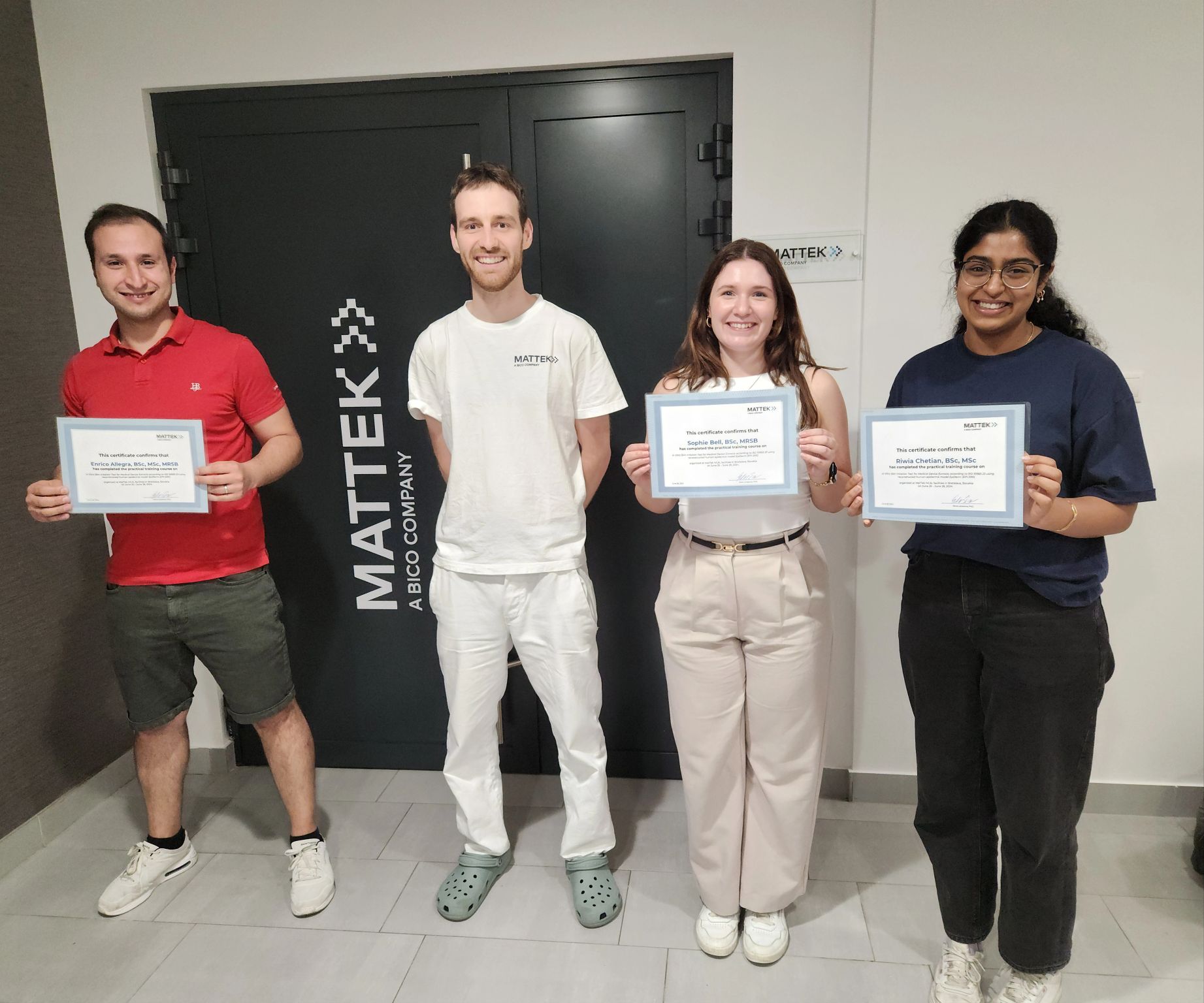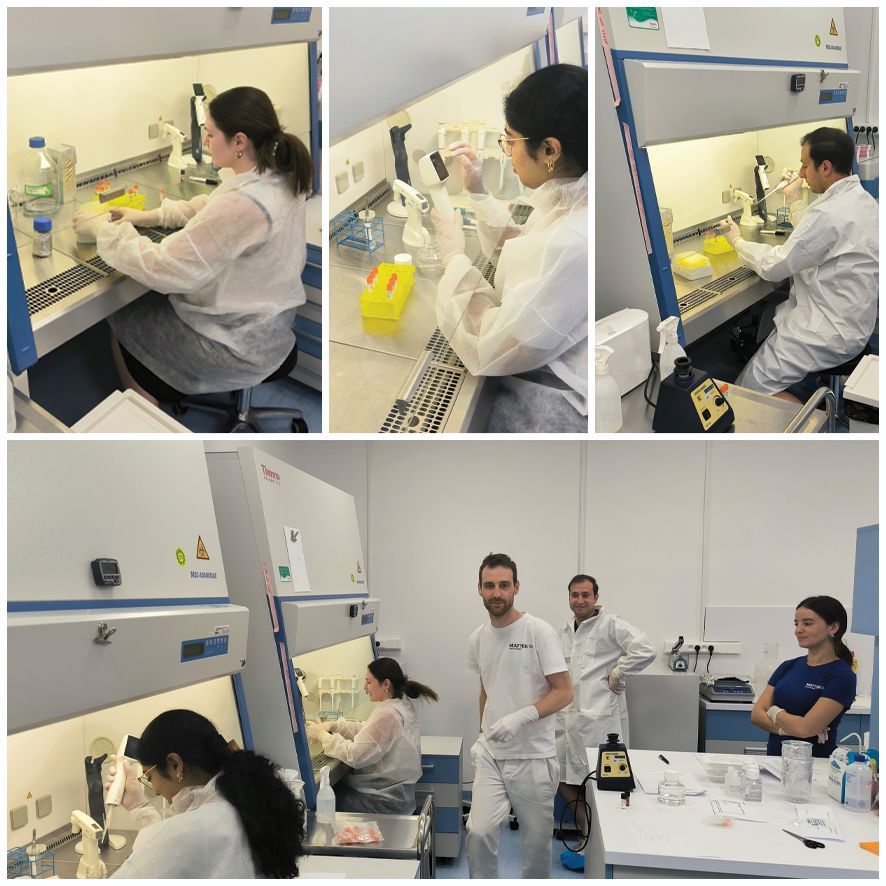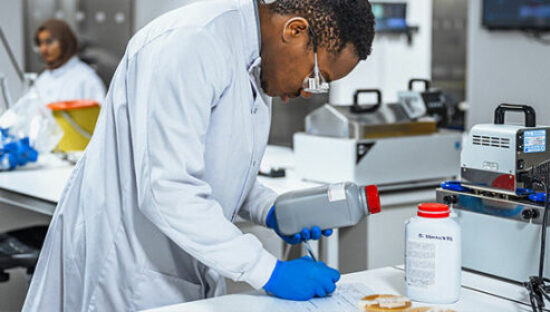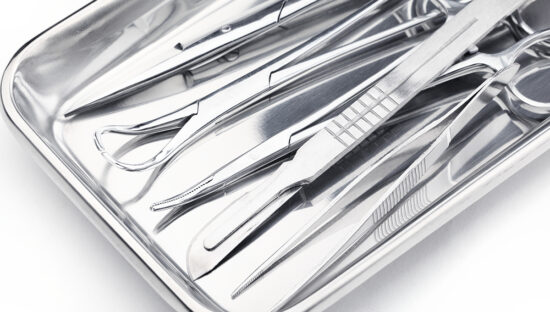
Exploring the Future of Skin Irritation Testing: Our Visit to MatTek Corporation in Bratislava
Our team – Enrico, Riwia, and Sophie – attended a training session in Bratislava, Slovakia. Our destination was MatTek Corporation, where we participated in an in-depth training course on the EpiDerm Skin Irritation Test. This innovative method is designed to evaluate the potential for skin irritancy in medical device extracts, making strides towards reducing the need for animal testing.

A New Era in Skin Irritation Testing
The EpiDerm Skin Irritation Test is notable for its high sensitivity, which allows for the detection of a wide range of irritants, even at very low concentrations. The EpiDerm tissues used in this assay are a ready-to-use reconstructed human epidermis (RHE), derived from human epidermal keratinocytes. These 3D tissue models closely mimic human epidermal tissue structure, featuring basal cells, spinous and granular layers, and cornified epidermal layers that are both mitotically and metabolically active.
Pioneering Efforts in 3D Tissue Models
MatTek Corporation has been a trailblazer in this field, validating the 3D tissue model within the ISO 10993 series through a comprehensive round-robin study conducted from 2016 to 2017. This study involved 17 laboratories worldwide and led to the development of the ISO 10993-23 guidelines. These guidelines introduced the in vitro method for irritation testing of medical devices, marking a significant step forward in reducing animal testing for certain medical devices. At Test Labs, we are eager to incorporate this method into our testing portfolio to support our customers’ biocompatibility testing needs using in vitro methods. Our next goal is to complete the in-house verification process.
Insights and Techniques from MatTek
During the three-day training course, the MatTek team provided invaluable insights into the technical aspects of the EpiDerm Skin Irritation Test and other 3D tissue models. The training included demonstrations of specific techniques and the use of state-of-the-art equipment for handling EpiDerm tissues. The team also shared methods to avoid ergonomic challenges, such as wrist fatigue, and offered advice on handling various types of medical devices.
One of the highlights was learning about alternative methodologies to overcome potential assay obstacles, such as MTT reducing agents or colorants. Additionally, the MatTek team introduced us to exciting developments in other 3D tissue models that are set to positively influence the future of in vitro medical device testing.
Some down time
Our visit wasn’t all work and no play. After the training sessions, the MatTek team graciously introduced us to traditional Slovakian cuisine. A standout dish was Bryndza, a gnocchi made with Slovakian sheep cheese and bacon. It was a unanimous hit, earning Enrico’s praise as the “best meal I’ve had all year”, which trust us, is not given away easily! This was accompanied by a [Paul Hollywood] handshake with the staff.
Looking Ahead
We extend our deepest gratitude to Miroslav Kandar, Marek Puskar, and Emily Reis for their hospitality and expertise. We look forward to continuing our relationship with MatTek as we bring the EpiDerm Skin Irritation Test to Test Labs, offering our customers a cutting-edge in vitro alternative for irritation testing of medical devices.
Stay tuned as we continue to innovate and expand our capabilities, supporting the development of safer, more effective medical devices through advanced biocompatibility testing methods.





